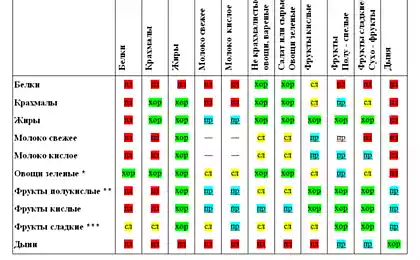249
5 Russian products that conquered China
How to please a billion customers. After the fall of the ruble, the Chinese market became even more attractive for Russian business. Some have already begun to act. From September 1, on the Chinese trading platform Tmall Global (part of Alibaba Group), confectionery products of the Russian brands Alenka, Korovka, Inspiration will begin to be sold. The Russian retailer ATK will act as the seller. But no one guarantees the company’s success. Building a business in China is difficult due to the specific laws and unpredictable preferences of residents. Although some have succeeded. Here are five Russian products that the Chinese love. Kaspersky Antivirus

The Kaspersky Lab product appeared in China in 2004. To win positions in the market helped eccentric television advertising, in which actor Jackie Chan in armor and helmet with the company logo fought viruses. After the fight, he pointed his finger at Evgeny: “If I need a good defense, I will choose Kaspersky.”
Until 2011, Kaspersky developed in China with the support of local partner Harry Cheng. Thanks to him, the Russian antivirus installed more than 100 million Chinese. Kaspersky later bought a distributor company from Cheng.
But of course, it is not without specific difficulties. A year ago, the Chinese government excluded the Laboratory from the list of software suppliers for state needs. They made a choice in favor of local players."Smeshariki" cartoon

Smesharikov’s Chinese audience is larger than Russia’s. There the cartoon is on more than 60 channels: including public and private, as well as on various Internet resources. It is called Kai-Shin-Chiu, which can be translated as “happy” or “jolly balls”. The names of all the heroes had to be changed. For example, Krosh Rabbit became Tusyaotyao, and Nyusha became Zhuxiaomei. During the adaptation, we also had to work on the stories. Employees of the Chinese division of the Riki Group admit that much had to be simplified, since the Russian subtext is not clear to the locals.
Smeshariki has already achieved recognition, despite the fact that they have only been in China since 2011. The next stage of development is the introduction of a traditional business model, in which the company earns not on broadcasts, but on the sale of souvenirs.
Baltika beer.

At the beginning of zero, China began to break out into the world leaders in beer consumption (now the country has become a record holder). The Baltika brewing company decided to follow the trend and in 2004 opened a local representative. For the Russian player, this was unprecedented: before that, when entering new markets, he launched test sales and only in case of a successful development of events opened an office in the country. But China’s prospects were clear without it.
The first advertising campaign Baltika launched in Shandong province. In the TV commercial, the product was positioned as "a real imported beer brewed and bottled in Europe." It made sense to fight only for a place in the premium segment of the market, since local beer is 2-3 times cheaper than Baltika. But there are consumers in China: managers over 30 years with above-average incomes. Now the company sells millions of liters a year in the country. The most popular of the entire line of products presented in China was Baltika No. 7.
Russian ice cream

China has long produced ice cream, but the taste is different from the Russian. Experts say that they are rather frozen desserts, in their manufacture almost no milk is used. Our ice cream is delicious to the Chinese. This is confirmed by the events of the end of last year. More than 10 tons of Russian ice cream were delivered to the border town of Heihe. It went away instantly. In Harbin, 500 boxes of ice cream were sold in one day. The level of sales was affected by the cheaper ruble (2 times against the yuan). But Russian entrepreneurs are hoping to take advantage of the situation to establish permanent sales. In January, 25 tons of Russian ice cream worth more than $65,000 were delivered to Heihe.
Vlad Ice Holding (manages Vladivostok Ice Cream Factory) export ice cream to China and claim that it is now very profitable, since the prices for the product there are 3-5 times higher than in Russia. The company "Khladokombinat" also supplies ice cream to China, although it is not yet decided to enter a new market, and exports the product with the help of partners.
Film "Stalingrad"

“Stalingrad” by Fyodor Bondarchuk, shot in 3D format (IMAX), became the highest grossing domestic film in the recent history of Russia. He raised $68 million. In China, everything went well from the beginning. It was easily missed by the censors, and to get to the cinemas managed only two weeks after receiving a rental license. As a result, “Stalingrad” became the most successful non-American foreign film in the history of the Chinese box office and grossed more than $ 12 million.
According to the producer of the film Alexander Rodnyansky, this happened due to two factors. First of all, in China they love spectacular cinema. The Chinese are interested in Russian history and know it well. published
P.S. And remember, just changing our consumption – together we change the world!
Source: secretmag.ru/articles/2015/06/19/russkie-v-kitae/?utm_source=livejournal&utm_content=secretmag&utm_medium=100_200&utm_campaign=cross_promo

The Kaspersky Lab product appeared in China in 2004. To win positions in the market helped eccentric television advertising, in which actor Jackie Chan in armor and helmet with the company logo fought viruses. After the fight, he pointed his finger at Evgeny: “If I need a good defense, I will choose Kaspersky.”
Until 2011, Kaspersky developed in China with the support of local partner Harry Cheng. Thanks to him, the Russian antivirus installed more than 100 million Chinese. Kaspersky later bought a distributor company from Cheng.
But of course, it is not without specific difficulties. A year ago, the Chinese government excluded the Laboratory from the list of software suppliers for state needs. They made a choice in favor of local players."Smeshariki" cartoon

Smesharikov’s Chinese audience is larger than Russia’s. There the cartoon is on more than 60 channels: including public and private, as well as on various Internet resources. It is called Kai-Shin-Chiu, which can be translated as “happy” or “jolly balls”. The names of all the heroes had to be changed. For example, Krosh Rabbit became Tusyaotyao, and Nyusha became Zhuxiaomei. During the adaptation, we also had to work on the stories. Employees of the Chinese division of the Riki Group admit that much had to be simplified, since the Russian subtext is not clear to the locals.
Smeshariki has already achieved recognition, despite the fact that they have only been in China since 2011. The next stage of development is the introduction of a traditional business model, in which the company earns not on broadcasts, but on the sale of souvenirs.
Baltika beer.

At the beginning of zero, China began to break out into the world leaders in beer consumption (now the country has become a record holder). The Baltika brewing company decided to follow the trend and in 2004 opened a local representative. For the Russian player, this was unprecedented: before that, when entering new markets, he launched test sales and only in case of a successful development of events opened an office in the country. But China’s prospects were clear without it.
The first advertising campaign Baltika launched in Shandong province. In the TV commercial, the product was positioned as "a real imported beer brewed and bottled in Europe." It made sense to fight only for a place in the premium segment of the market, since local beer is 2-3 times cheaper than Baltika. But there are consumers in China: managers over 30 years with above-average incomes. Now the company sells millions of liters a year in the country. The most popular of the entire line of products presented in China was Baltika No. 7.
Russian ice cream

China has long produced ice cream, but the taste is different from the Russian. Experts say that they are rather frozen desserts, in their manufacture almost no milk is used. Our ice cream is delicious to the Chinese. This is confirmed by the events of the end of last year. More than 10 tons of Russian ice cream were delivered to the border town of Heihe. It went away instantly. In Harbin, 500 boxes of ice cream were sold in one day. The level of sales was affected by the cheaper ruble (2 times against the yuan). But Russian entrepreneurs are hoping to take advantage of the situation to establish permanent sales. In January, 25 tons of Russian ice cream worth more than $65,000 were delivered to Heihe.
Vlad Ice Holding (manages Vladivostok Ice Cream Factory) export ice cream to China and claim that it is now very profitable, since the prices for the product there are 3-5 times higher than in Russia. The company "Khladokombinat" also supplies ice cream to China, although it is not yet decided to enter a new market, and exports the product with the help of partners.
Film "Stalingrad"

“Stalingrad” by Fyodor Bondarchuk, shot in 3D format (IMAX), became the highest grossing domestic film in the recent history of Russia. He raised $68 million. In China, everything went well from the beginning. It was easily missed by the censors, and to get to the cinemas managed only two weeks after receiving a rental license. As a result, “Stalingrad” became the most successful non-American foreign film in the history of the Chinese box office and grossed more than $ 12 million.
According to the producer of the film Alexander Rodnyansky, this happened due to two factors. First of all, in China they love spectacular cinema. The Chinese are interested in Russian history and know it well. published
P.S. And remember, just changing our consumption – together we change the world!
Source: secretmag.ru/articles/2015/06/19/russkie-v-kitae/?utm_source=livejournal&utm_content=secretmag&utm_medium=100_200&utm_campaign=cross_promo























